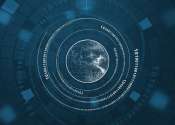Algorithm helps artificial intelligence systems dodge 'adversarial' inputs
In a perfect world, what you see is what you get. If this were the case, the job of artificial intelligence systems would be refreshingly straightforward.
Mar 8, 2021
0
125
Computer Sciences

In a perfect world, what you see is what you get. If this were the case, the job of artificial intelligence systems would be refreshingly straightforward.
Mar 8, 2021
0
125
Hardware

Researchers have created a small device that "sees" and creates memories in a similar way to humans, in a promising step towards one day having applications that can make rapid, complex decisions such as in self-driving cars.
Jun 14, 2023
0
120
Computer Sciences

UCLA and Stanford University engineers have demonstrated a computer system that can discover and identify the real-world objects it "sees" based on the same method of visual learning that humans use.
Dec 18, 2018
0
606
Robotics

In recent years, roboticists have been trying to improve how robots interact with different objects found in real-world settings. While some of their efforts yielded promising results, the manipulation skills of most existing ...
Computer Sciences

Humans regularly tackle and solve a variety of complex visuospatial problems. In contrast, most machine learning and computer vision techniques developed so far are designed to solve individual tasks, rather than applying ...
Computer Sciences

The beauty of art lies in its ability to evoke emotions and spark imagination, but understanding the message behind a piece can be challenging. Computer scientists from the University of Luxembourg have studied the potential ...
Apr 21, 2023
1
14
Hardware

As any driver knows, accidents can happen in the blink of an eye—so when it comes to the camera system in autonomous vehicles, processing time is critical. The time that it takes for the system to snap an image and deliver ...
Aug 26, 2022
0
90
Machine learning & AI

Researchers from MIT and elsewhere have developed an interactive tool that, for the first time, lets users see and control how automated machine-learning systems work. The aim is to build confidence in these systems and find ...
Jun 3, 2019
0
264
Robotics

Computer scientists at The University of Texas at Austin have taught an artificial intelligence agent how to do something that usually only humans can do—take a few quick glimpses around and infer its whole environment, ...
May 15, 2019
0
217
Security

Most artificially intelligent systems are based on neural networks, algorithms inspired by biological neurons found in the brain. These networks can consist of multiple layers, with inputs coming in one side and outputs going ...
Sep 15, 2023
0
83
The visual system is the part of the central nervous system which enables organisms to see. It interprets the information from visible light to build a representation of the world surrounding the body. The visual system accomplishes a number of complex tasks, including the reception of light, and the formation of monocular representations; the construction of a binocular perception from a pair of two dimensional projections; the identification and categorization of visual objects; assessing distances to and between objects; and guiding body movements to visual objects. The psychological manifestation of visual information is known as visual perception.
This text uses material from Wikipedia, licensed under CC BY-SA